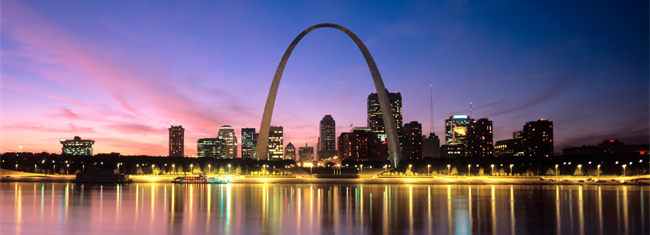The Powder Keg of Middle America
 As a PR professional, former government spokesperson and native St. Louisan, there are many different angles I could write about the current situation in Ferguson, Missouri, which is just 20 minutes from where I grew up.
As a PR professional, former government spokesperson and native St. Louisan, there are many different angles I could write about the current situation in Ferguson, Missouri, which is just 20 minutes from where I grew up.
I could write about the many PR missteps the Ferguson Police Department has made, my critiques of the local vs. national news coverage of the issue, or how and why this quintessential Midwestern town, often overlooked by the rest of this country, is one of the most racially and socially segregated cities in this country. And while writing about the former two options may be very interesting, understanding the latter is more important.
The segregation in St. Louis is the result of the region's origins and neglect by the rest of the country for years. Living the past decade in New York, I have often dealt with people's complete lack of knowledge of this area. Most people cannot point out where Missouri is on a map. In fact, someone once asked me if my family was okay after Hurricane Katrina. And, no part of the country really claims Missouri - northerners think it is part of the south, while the south thinks Missourians are Yankees. So, it is not surprising that the racial and social issues in St. Louis have been overlooked for so long.
Then, there is the history of the area. Though St. Louis is not part of the south and is a true Midwestern city, it has many southern tendencies. This juxtaposition has a lot to do with the founding of the area – St. Louis was settled by southerners. The city was founded in 1764 by Pierre Laclède and Auguste Chouteau, and was named for Louis IX of France. After being acquired by the U.S. as part of the Louisiana Purchase in 1803, the city became heavily populated by previous residents of the country's southern states. Further adding to its connection to the south is the state's precarious position in the union. Missouri is the only slave state above the Mason-Dixon line, the result of the Missouri Compromise of 1820 which sought to maintain an equal balance of power between the north and south by allowing Maine to join the union as a free state and Missouri as a slave state.
The area's history got even more complicated when the country broke out in civil war in 1861. Missouri was on the fence during the war, debating whether the state should secede, but either way its support was torn. After the war, Missouri enacted Jim Crow laws and participated in segregation until Brown vs. Board of Education (1954) and the passage of the Civil Rights Act in 1964. This, combined later with white flight post World War II, allowed for exclusive, gated communities to crop up all over the greater St. Louis area, separating populations not only by race, but economic status and religious affiliation. And despite leaving many of these communities like Ferguson in the 1950s and 1960s, the white and rich continue to dominate their governing bodies, resulting in great disparity and lack of understanding between those who live there and those who rule.
If all of this was not enough to make for a complex, tension-riled situation, there is then the fact that St. Louisans are grounded in the past and prefer their order. People do not simply move back to the general area, but often the neighborhood or house they grew up in; their friends are descendents of their parents', grandparents', and great-grandparents' friends; they marry closely into families they have known forever. It's two degrees of separation in St. Louis, not six; and they like to ask questions like "where'd you go to school," meaning high school not college, to get a quick sense of what part of town people are from, who they know and where they land on the city's social ladder.
All of these layers and complexities are what have allowed segregation in the city to exist and is why, though greatly saddened by the recent events in Ferguson, I was not entirely surprised by it. The racial and social tensions of this community run wide and deep, and have been largely overlooked by the outside world for decades, allowing them to persist, fester, and result in the kind of wide-scale, headline-grabbing events we are seeing today. Though I hope the violence ceases soon, I also hope that peaceful protesting continues until the truth of what exactly happened on Saturday, August 9, 2014, comes out, and finally the issues of racial and social segregation in St. Louis, and similar cities around the country, are seen, addressed and no longer overlooked as they have been for far too long. ![]()
